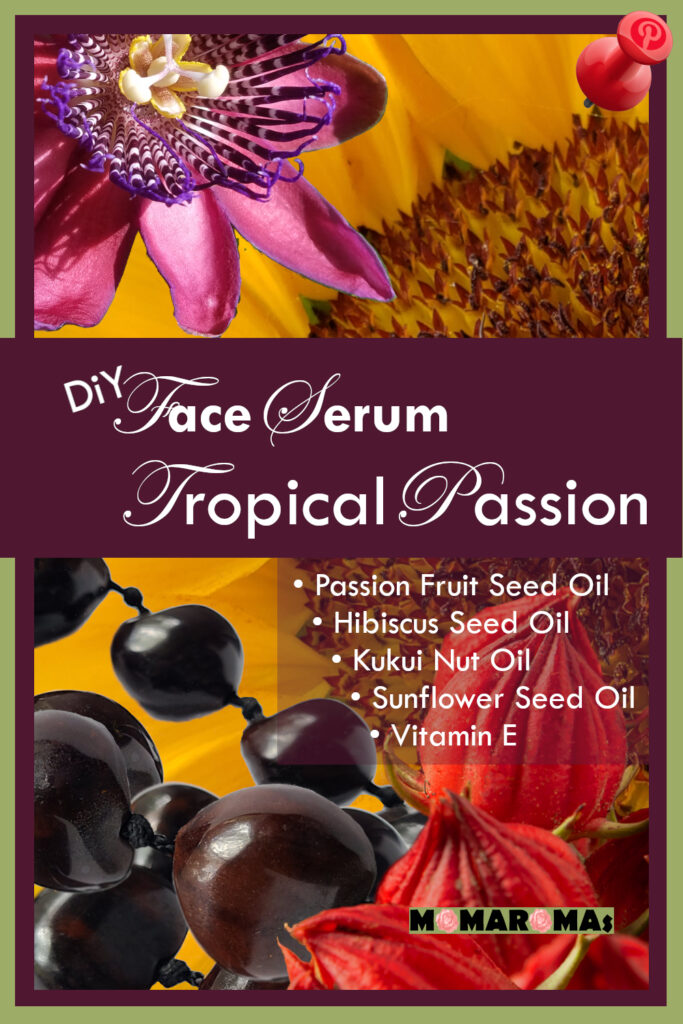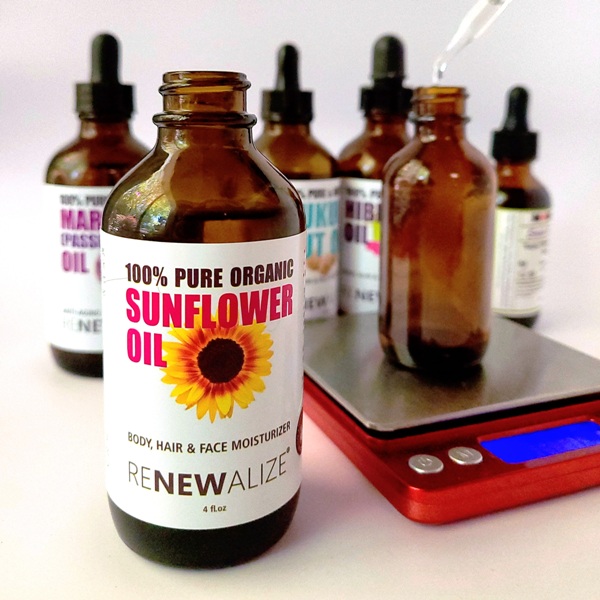Nourish Your Skin with Tropical Passion Face Serum
Did you know that your face takes the biggest beating from the elements—sun, rain, wind, heat, cold? It deserves some TLC! In fact, in the time it takes you to read this post about Tropical Passion Facial Serum, you could make your very own skin-nourishing face serum!
This post is extensive and information-packed, so please use the links below to navigate.

[This post contains affiliate links. If you make a purchase through one of these links I may earn a commission. This does not impact your price. For more information, please see our disclosure.]
In this Post:
About the Face Serum
As the warmer days of Spring’s stretch before us into the early days of Summer, we spend more time outside. Our skin, especially our face, is more exposed to the elements—not quite warm Spring winds, cloud-filtered sunshine, and sometimes icy rain. And then, after long hours outside in the elements, we come indoors to “conditioned” air and hot showers. This makes it even more important to give our skin the TLC it deserves.
Most of my favorite specialty oils to use in face serums are pressed from the seeds of tropical plants. These fixed lipid oils are rich in fatty acids that provide important nourishment to our skin and support the lipid matrix that makes up the skin barrier. Using these nourishing oils reduces transepidermal water loss (TEWL) and makes for softer, healthier, more resilient skin.
The Tropical Passion Facial Serum recipe below features my favorite tropical seed oils: Passion Fruit, Hibiscus, and Kukui combined with high-linoleic Sunflower.
It makes 25 grams of face serum, which will come to just below the shoulder of a 1oz (30ml) dropper bottle.
⭐️Tropical Passion Facial Serum Recipe
- 1oz amber dropper bottle
- 12.5g (50%) Sunflower seed oil (Helianthus annuus)
- 6g (24%) Passion Fruit seed oil (Passiflora edulis / P. incarnata)
- 3.5g (14%) Hibiscus seed oil (Hibiscus sabdariffa)
- 2.75g (11%) Kukui nut oil (Aleurites moluccanus)
- 0.25g (1%) Vitamin E (Tocopherol)
🌺See my Recommended Suppliers below
📌Pin the Recipe
Why Grams?
When formulating skin care products, I measure all ingredients, both liquid and solid, by weight rather than volume. Measuring by weight is a more accurate and repeatable method of measurement.
You don’t need to spend a lot of money on a high-end scale, though! An inexpensive jeweler’s scale that’s accurate to 0.05g is all you need.
You’ll notice I’ve also included percentages for each ingredient. This means you can make a smaller or larger batch by simply adjusting the weight of the ingredient using the percentage of the total.
Using Your Face Serum
After cleansing, spritz face lightly with a hydrosol. A few of my favorites are Rose, Roman Chamomile, and Lemon Balm. Or use a natural hydrating toner.
While face is still damp, place a few drops of Tropical Passion Facial Serum into the palm of one hand. Using fingertips gently apply to your face with small upward semi-circular strokes. Finish up by applying any remaining face serum to the neck and decollete.
Tropical Passion Facial Serum is light enough to be used in the morning for all-day nourishing skin protection. Use a drop or two extra before bed. This provides more intense moisturizing and locks in hydration overnight.
After use, seal the bottle tightly and keep in a cool, dark place.

Essential Oils are Optional in a Face Serum
Essential oils are not necessary for a nourishing facial serum. In fact, I don’t generally use essential oils in my face serums. However, if desired, you can add one of the following combinations of skin-supporting essential oils. I find that each of these works well with the natural nutty/fruity aromas of the serum oils:
- 1 drop Rose Absolute (Rosa x damascena or R. x centifolia) + 1 drop of Tea Tree (Melaleuca alternifolia)
- 2 drops Neroli Absolute (Citrus x aurantium)
- 1 drop Jasmine Absolute (Jasminum grandiflorum) +1 drop Carrot Seed essential oil (Daucus carota)
- 1 drop Roman Chamomile (Chamaemelum nobile) + 2 drops Lavender essential oil (Lavandula angustifolia)
🌺See my Recommended Suppliers below

Why These Oils for a Face Serum?
This facial serum is rich in Linoleic Acid (Omega-6). Linoleic acid makes up a significant percentage of the fatty acids in our skin. This means it is a vital ingredient for skin barrier repair and maintenance.
Linoleic acid is an essential fatty acid (EFA). Our bodies don’t produce EFAs and yet they are important to numerous body functions and tissues. Therefore, providing them in food or topical applications is essential.
When we are formulating a skin-nourishing facial serum we want to ensure it’s rich in linoleic acid. This is especially important for sensitive, damaged, or mature skin.
Sunflower Seed Oil (Helianthus annuus)
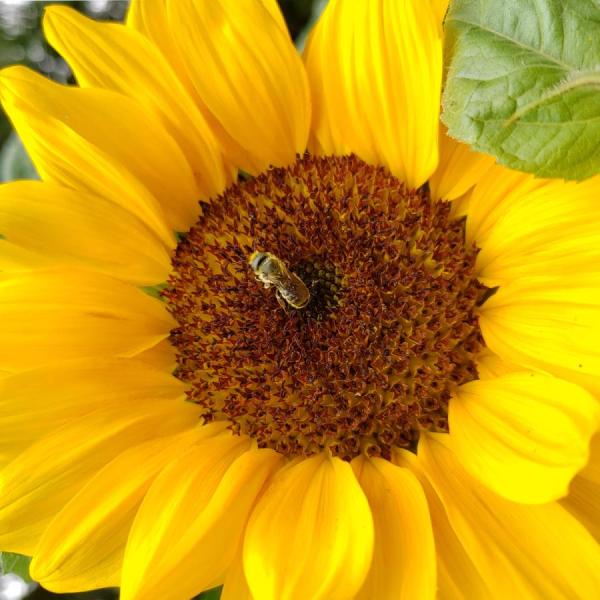
Sunflower seed oil is available in a couple of different types, each with vastly different fatty acid profiles. The type we are looking for here is called “standard,” “regular,” or high-linoleic Sunflower seed oil.
High-linoleic Sunflower seed oil makes a wonderful base oil for a skin barrier supporting facial serum or body oil. As a bonus, the sunflower seed has a very high oil content, nearly 50%, meaning it produces a lot of oil per pound of seed, making it a fairly inexpensive oil to purchase.
💚However, finding high-linoleic Sunflower seed oil can be difficult (in North America). This is because most of the Sunflower seed oil sold, even through cosmetic ingredient suppliers, is the high-oleic acid type—the type you use for frying. When sourcing Sunflower seed oil, be sure to ask your supplier if it’s high-linoleic or high-oleic. If it’s high-oleic, keep looking! (My recommended source is Renewalize.)
“Standard” Sunflower Seed Oil Fatty Acid Profile: 69% Linoleic Acid, 19% Oleic Acid, 6% Palmitic Acid, 3% Stearic Acid[1]
🌺See my Recommended Suppliers below
Passion Fruit Seed Oil (Passiflora edulis or P. incarnata)
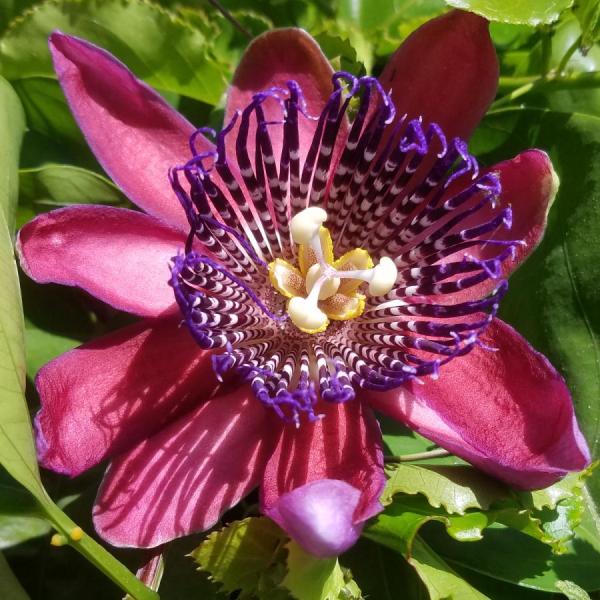
Also known as Maracuja oil, Passion Fruit seed oil is one of my absolute favorite cold-pressed fixed oils for face serums. It’s light, absorbs rapidly, and, like standard Sunflower seed oil, it is very high in linoleic acid.
Also rich in antioxidants, Passion Fruit seed oil is great for all skin types including dry, oily, sensitive, mature, irritated, and acne-prone. In fact, acne-prone skin responds well to the natural antibacterial constituents in Passion Fruit seed oil.[2]
As someone with sensitive skin, prone to eczema, Passion Fruit seed oil has been integral in improving the health and resiliency of my skin.
Passion Fruit seed oil has a beautifully soft, fruity, somewhat nutty aroma.
💚The passion fruit plant is truly a giving plant. From leaf, to flower, to fruit, to seed it provides us with some wonderfully therapeutic products. You may have had passion flower tea which has a lovely aroma and calming energy. I use it in my Better Than Basic Chamomile tea blend. The seed shares this calming property and so I make it a part of my pre-bedtime ritual, incorporating it into my hand creams and sleep-supporting aromatherapy blends, like my favorite Sleep Assist Roll-on (kid-friendly, too).
Passion Fruit Seed Oil Fatty Acid Profile: 62% Linoleic Acid, 15% Oleic Acid, 10% Palmitic Acid, 3% Linolenic Acid, 3% Stearic Acid[1]
🌺See my Recommended Suppliers below
Hibiscus Seed Oil (Hibiscus sabdariffa)
A slightly richer oil than Passion Fruit seed oil, Hibiscus seed oil has a significant percentage of palmitic acid. This fatty acid is important for maintaining skin barrier and improving elasticity. Palmitic acid provides a luxurious emollience to Hibiscus seed oil making it a wonderful addition to any face serum.
While it may be rich, Hibiscus seed oil is also high in linoleic acid, so it absorbs very rapidly, leaving the skin feeling silky and deeply moisturized without being oily. Some report that it can minimize the appearance of fine lines. From personal experience, I can say Hibiscus seed oil has certainly helped improve the texture and softness of my skin.
Hibiscus seed oil is also rich in antioxidants, specifically tocopherols. These penetrate rapidly into the skin to help fight free-radicals and soothe inflammation. This makes Hibiscus seed oil excellent for irritated skin conditions, such as eczema and acne.
Hibiscus seed oil has a mild, sweet, somewhat nutty aroma.
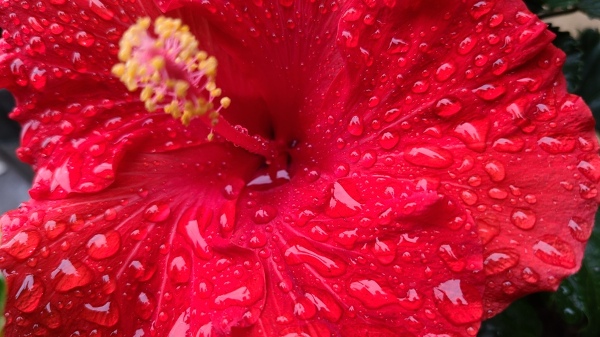
💚The hibiscus that is used to create Hibiscus seed oil is not the red hibiscus that every one is familiar with. It’s actually a difference species of hibiscus. The red hibiscus is Hibiscus rosa-sinensis, whereas the hibiscus used to make Hibiscus seed oil is Hibiscus sabdariffa, also known as “roselle” and “jamaica.”
Hibiscus Seed Oil Fatty Acid Profile: 48% Linoleic Acid, 27% Oleic Acid, 18% Palmitic Acid, 5% Stearic Acid, 0.4% Linolenic Acid, 0.2 Arachadic Acid[1]
🌺See my Recommended Suppliers below
Kukui Nut Oil (Aleurites moluccanus)
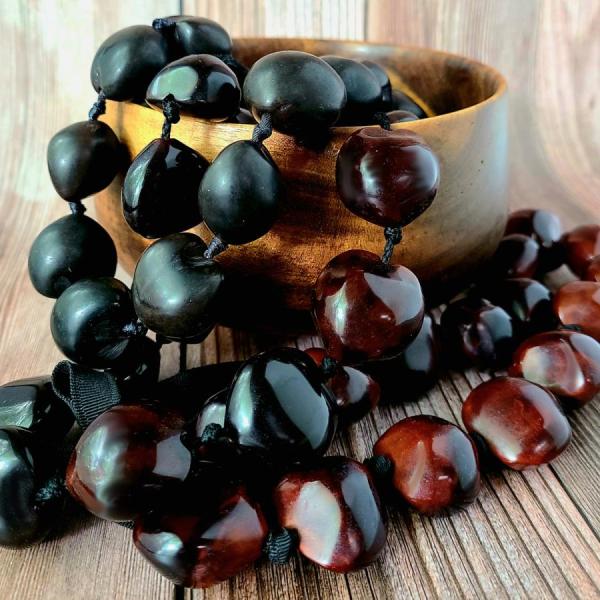
Pressed from the roasted nuts, Kukui nut oil has a fatty acid profile very close to our skin’s natural sebum. This allows it to penetrate rapidly and deeply, creating a smooth, silky texture without being oily.
It’s soothing to sunburn and windburn. It calms inflammation, making it helpful for acne, eczema, and wound and burn healing. Kukui is also a wonderful skin-nourishing bath additive.
Like the other oils in Tropical Passion Facial Serum, Kukui nut oil is rich in linoleic acid. It’s also rich an another EFA: α-linolenic acid (Omega-3). While a less dominant fatty acid in the skin, α-linolenic acid works alongside linoleic acid to help repair damaged cells and reduce hyperpigmentation due to UV exposure.[3]
Kukui nut oil has a nutty, rich aroma.
💚The Kukui has been used for centuries throughout Polynesia for religious and health purposes, to protect skin from the elements, and for general skin and hair care. In Hawai’i, where the Kukui is the State Tree, Kukui nut lei are worn to provide protection and enlightenment. These lei are often gifted at rites of passage and passed down in families.
Kukui Nut Oil Fatty Acid Profile: 40% Linoleic Acid, 26% α-Linoleic Acid, 25% Oleic Acid, 4% Palmitic Acid, 4% Stearic Acid[1]
🔶️Special Safety Note: If you have a nut allergy, omit the Kukui nut oil in this face serum and replace with equal parts Passion Fruit seed oil and Hibiscus seed oil.
🌺See my Recommended Suppliers below
Vitamin E (Tocopherol)
And finally Vitamin E, or tocopherol, is an antioxidant that improves the stability of lipid oils. Vitamin E extends their shelf life by reducing the speed of oxidation, which leads to eventual rancidity. Vitamin E is a standard ingredient in my body and face serums, oils, butters, and creams.
In fact, many artisan cosmetic formulators will add a few drops of Vitamin E to their lipid oils upon receipt from the supplier to give them an extra antioxidant boost. Vitamin E is not a preservative.
And, as you learned above with Hibiscus seed oil, tocopherol is a wonderfully soothing skin protector. When Vitamin E is applied topically, it penetrates rapidly, is absorbed into cellular membranes, and becomes incorporated into the lipid matrix of the skin barrier. This helps protect the skin from free radicals and reactive oxygen species (ROS).[4]
When applied topically in a body or facial serum, Vitamin E is a good supplement to the Vitamin E delivered to the skin from the food we eat (or vitamins we take).
(NOTE: Vitamin E, in general, doesn’t have a pleasant aroma. Rest assured, the small percentage you’ll use in your skin care products won’t impact the aroma.)
🌺See my Recommended Suppliers below
I hope you enjoy making your own Tropical Passion Face Serum. I’d love to hear about your experience in the comments below!

References
- Certificates of Analysis from Renewalize.
- Pereira, M.G., Maciel, G.M., Haminiuk, C.W.I., Bach, F., Hamerski, F., de Paula Scheer, A., Corazza, M.L. (2019). Effect of extraction process on composition, antioxidant and antibacterial activity of oil from yellow passion fruit (Passiflora edulis var. flavicarpa) seeds. Waste Biomass Valori 10(9), 2611-2625. https://doi.org/10.1007/s12649-018-0269-y
- Ando, H., Ryu, A., Hashimoto, A., Oka, M., Ichihashi, M. (1998). Linoleic acid and alpha-linoleni acid lightens ultraviolet-induced hyperpigmentation of the skin. Arch Dermatol Res 290(7):375-81. https://doi.org/10.1007/s004030050320
- Michels, A.J. (2012). Vitamin E and skin health. Linus Pauling Institute, Oregon State University. https://lpi.oregonstate.edu/mic/health-disease/skin-health/vitamin-E

Mom’s Face Serum Ingredients Shopping List
For all of the lipid oils used in Tropical Passion Face Serum, and a wider selection of lovely oils and butters for skin, lip, and hair care, check out my favorites for DIY Skin Care on Amazon.
Specific Lipid Carrier Oils
- Hibiscus seed oil (Hibiscus sabdariffa):
- Renewalize, organic, cold pressed, unfiltered, virgin (on Amazon).
- Kukui Nut oil (Aleurites moluccanus):
- Renewalize, cold pressed, refined (on Amazon).
- Passion Fruit seed oil (Passiflora edulis):
- Renewalize, cold-pressed, unfiltered (on Amazon).💛
- Sunflower seed oil (Helianthus annuus):
- Renewalize, organic, high-linoleic (on Amazon).💛
More about Renewalize: I rely often on the lipid carrier oils from Renewalize for beautiful facial serums and after bath body oils. Renewalize is a very small company that works with brokers around the world to source high quality non-GMO and organically grown plant oils produced in their native location.
Specific Essential Oils
If you decide you would like to include essential oils in your face serum, the suppliers here are my recommended go-tos.
- Carrot Seed essential oil (Daucus carota):
- Aromatics International, organic
- Plant Therapy, sustainable (Direct and Amazon).
- Jasmine Absolute (Jasminum spp.):
- Lavender essential oil (Lavandula angustifolia):
- Aromatics International, organic artisan (grown and distilled in Montana)
- Plant Therapy, organic (Direct and Amazon)
- TIP: Plant Therapy’s Lavender Hydrosol (Direct and Amazon) is lovely for skin care and general aromatherapy.
- Neroli essential oil (Citrus x aurantium var amara):
- Aromatics International, organic
- Plant Therapy, sustainable (Direct and Amazon)
- Substitute: Neroli/Petitgrain co-distill from Aromatics International, organic.
- Roman Chamomile essential oil (Chamaemelum nobile):
- Plant Therapy, organic (Direct and Amazon)
- Aromatics International, organic.
- Rose Absolute/Otto (Rosa damascena / R. centifolia):
- Aromatics International, Absolute, organic
- Plant Therapy, Absolute, sustainable (Direct and Amazon)
- Aromatics International, Otto, organic
- Plant Therapy, Otto, sustainable (Direct and Amazon).
- Tea Tree essential oil (Melaleuca alternifolia):
- Aromatics International, organic
- Plant Therapy, organic (Direct and Amazon)
- TIP: Tea Tree Hydrosol is excellent for skin care!
General Formulating Tools
Amazon is my go-to for most lab supplies, glassware, and product containers. This is the jeweler’s scale I use for measuring small amounts for my skin care formulations. And you can find serum dropper bottles of various sizes in my Favorite Containers for Skin Care list on Amazon.
This information has not been evaluated by the Food and Drug Administration and is not intended to diagnose, treat, cure, or prevent any disease. It is for educational purposes only.
All recipes provided are for personal use and are not designed for re-sale or large-scale manufacturing.
Please consult your doctor, naturopath, herbal practitioner, or other qualified health professional for medical advice and before starting any herbal regimen, particularly if you are pregnant or nursing, have any existing medical conditions, or are taking any medications.

Chris P | Author, Certified Aromatherapist, Natural Skin Care Formulator
Chris (“Mom”) enjoys formulating bespoke aromatherapy, skin care, and herbal products to support her family, pets, friends, and clients. She also loves experimenting with recipes in the kitchen. An avid reader, writer, and lifetime learner, Chris enthusiastically explores research rabbit holes and then writes about her discoveries.💚 (Learn more >>)



